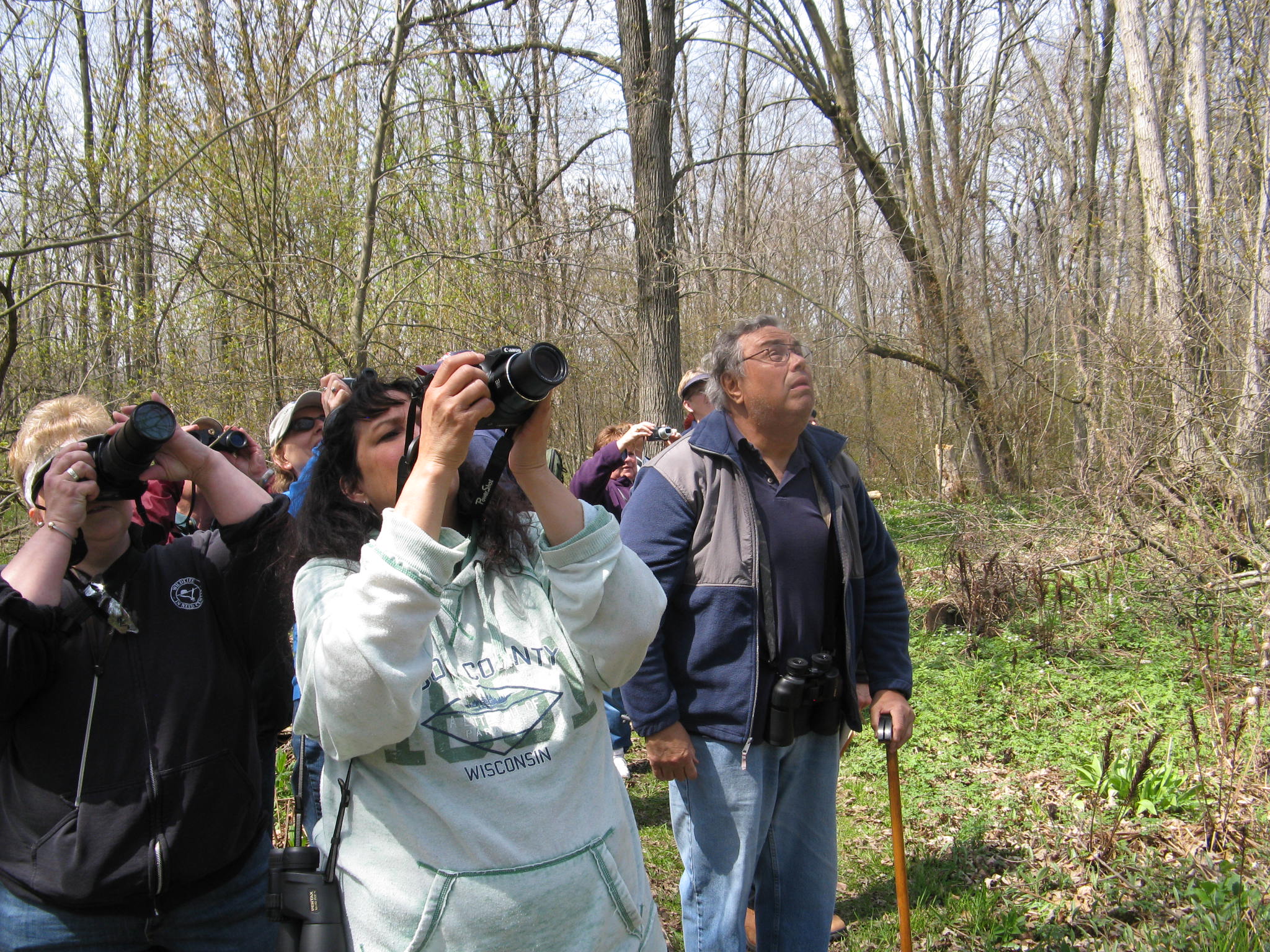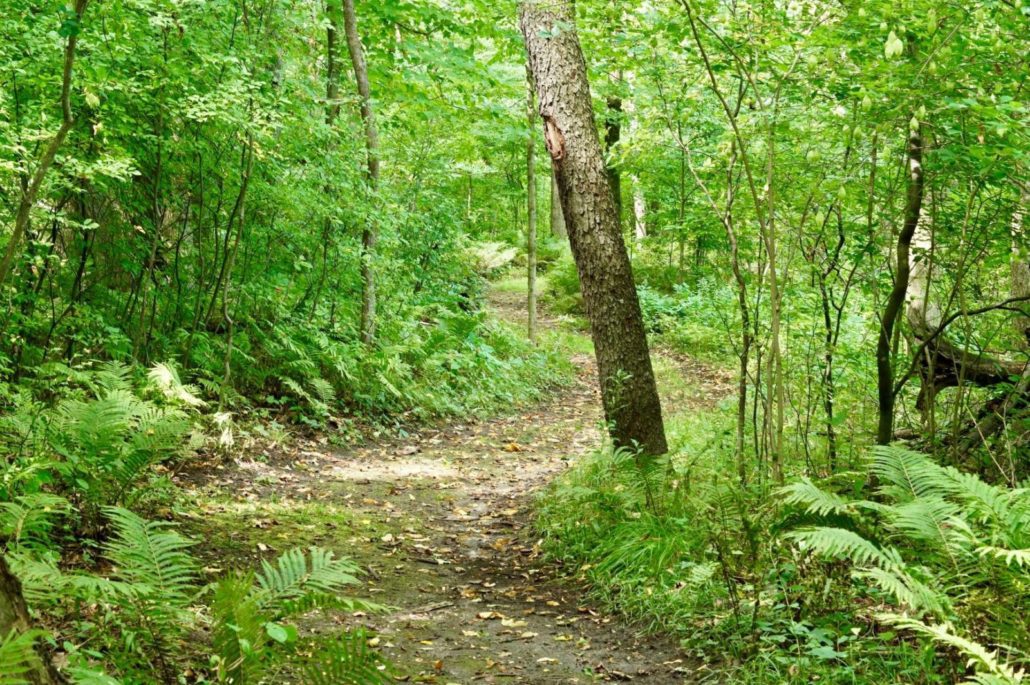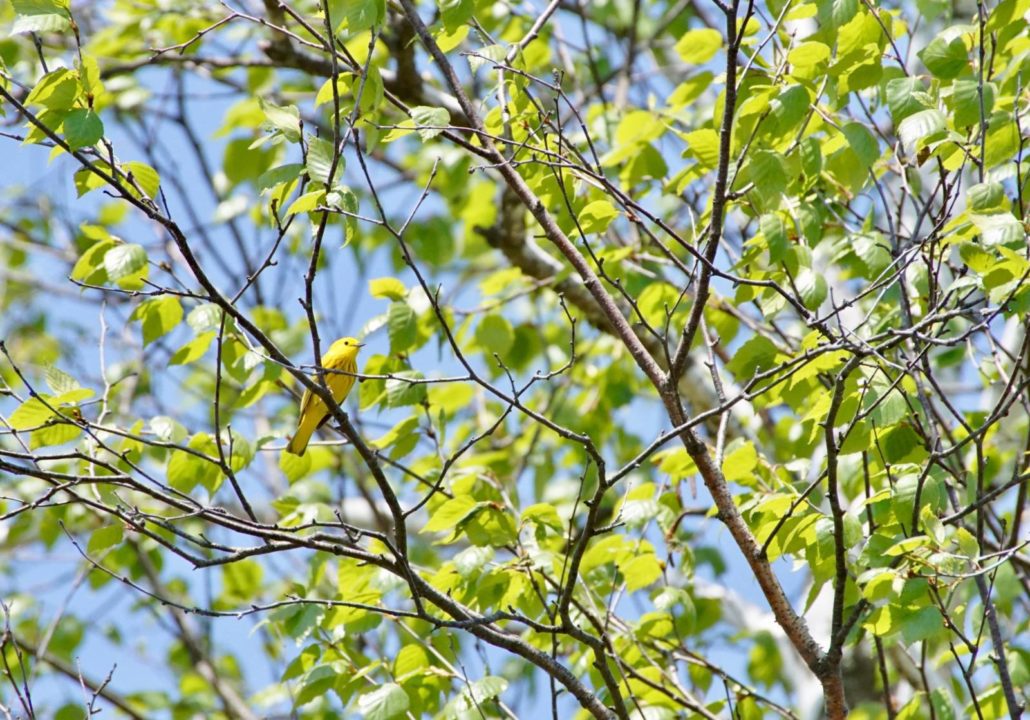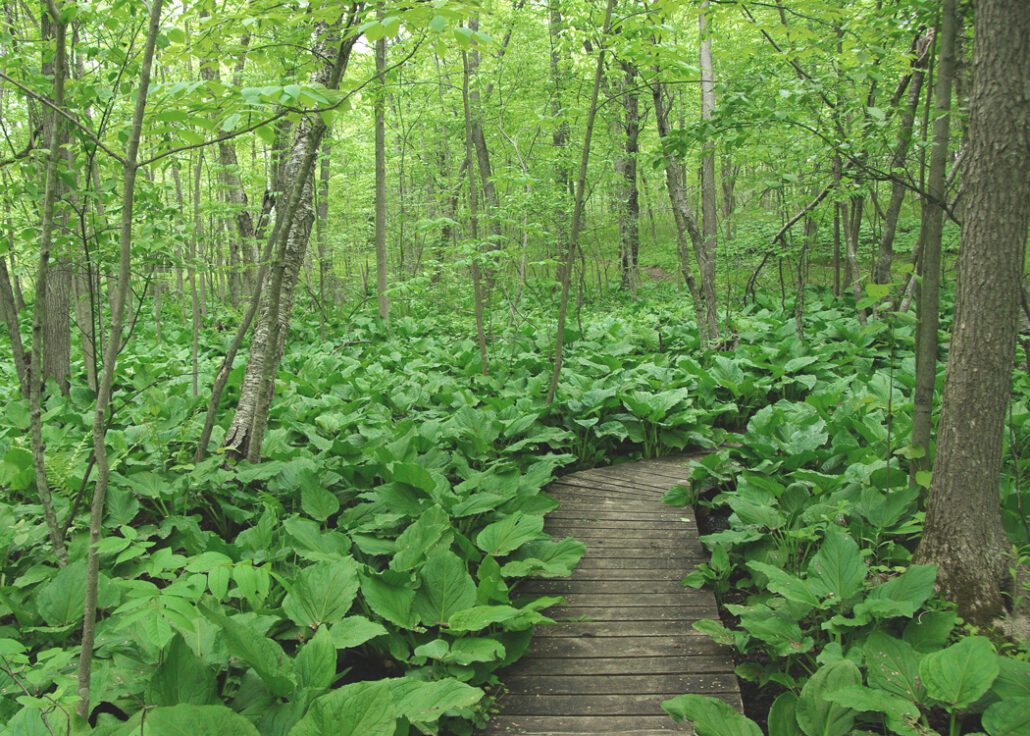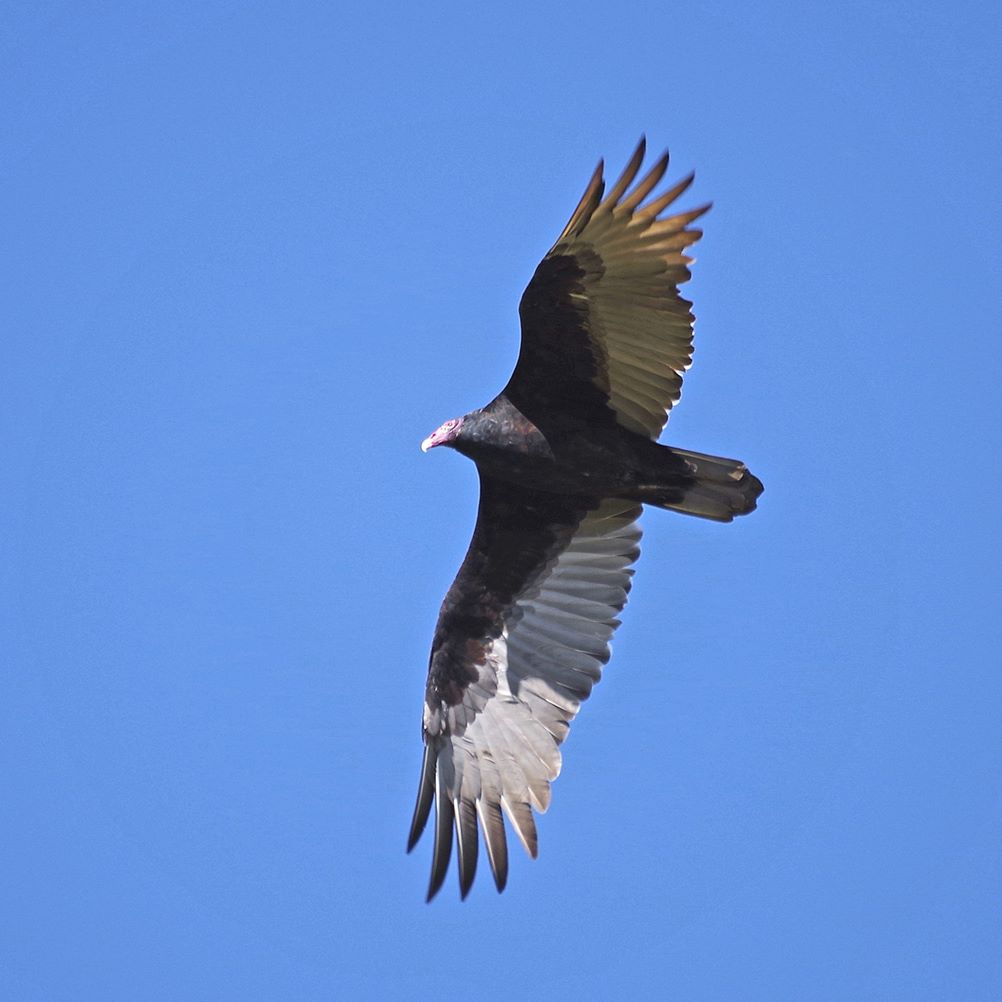
by Kate Redmond
Bug o’the Week And Now for Something a Little Different XVI – Turkey Vulture
Howdy BugFans,
The BugLady hangs out on a tower by Lake Michigan from the beginning of September until the end of November, logging migrating raptors as they navigate south along the shoreline (up until this week, she was still seeing a few Monarchs and Common Green Darners, too). She already misses the comforting presence of Turkey Vultures – 99.9% of this fall’s migrating Vultures have made their way past the hawk tower – she loves looking way out over the fields and seeing them rocking back and forth over the woods, taking care of business.
She wrote this biography for the newsletter of the Lake Michigan Bird Observatory (the organization formerly known as the Western Great Lakes Bird and Bat Observatory), an organization that would appreciate your support.
A sit on the hawk tower in mid-October of 2021 turned out to be a religious experience. Though they are not technically birds of prey, we do include migrating Turkey Vultures (TVs) in our Hawk Count, and of the 789 raptors of 10 species that passed by the tower on that amazing day, almost half were TVs! The vultures approached in groups of 15 to 30 birds, circling on warm updrafts as they moved south. As one group passed, two or three more could be seen approaching us from the north.
Turkey Vultures get their name from dark plumage and bald, red heads that are reminiscent of Wild Turkeys. They’re also called buzzards. “Vulture” probably comes from the Latin “vellere,” which means “to pluck or tear,” and their scientific name, Cathartes aura, means “golden purifier or cleanser” (being eaten by a vulture after death was believed in some cultures to cleanse and release one’s soul). The Cherokees referred to TVs as “Peace Eagles” because although they look like eagles, Turkey Vultures don’t kill their food.
Turkey Vultures are one of six species in the New World Vulture family Cathartidae, and they are not related to the vultures of Europe and Asia. Three of those New World species — the TV, Black Vulture, and California Condor — are found in the US. Turkey Vultures are the most widespread of our vultures, found from southern Canada into South America, and data suggest that their range is spreading to the north.
They’re generally found in open or semi-open country rather than in heavily wooded areas, and they are tolerant of human activity and of landscapes altered by man. Construction of Wisconsin’s interstate highway system began in the late 1940’s, and one source pointed to the subsequent increase in road kills as a cause of higher numbers of TVs here in the second half of the 20th century.
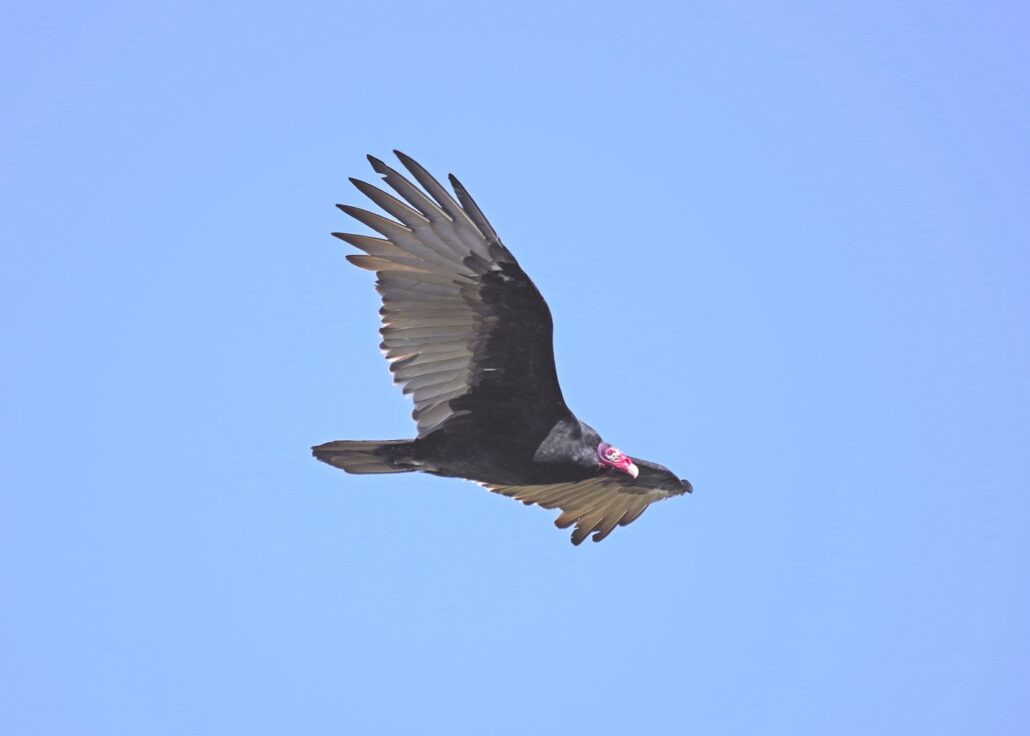
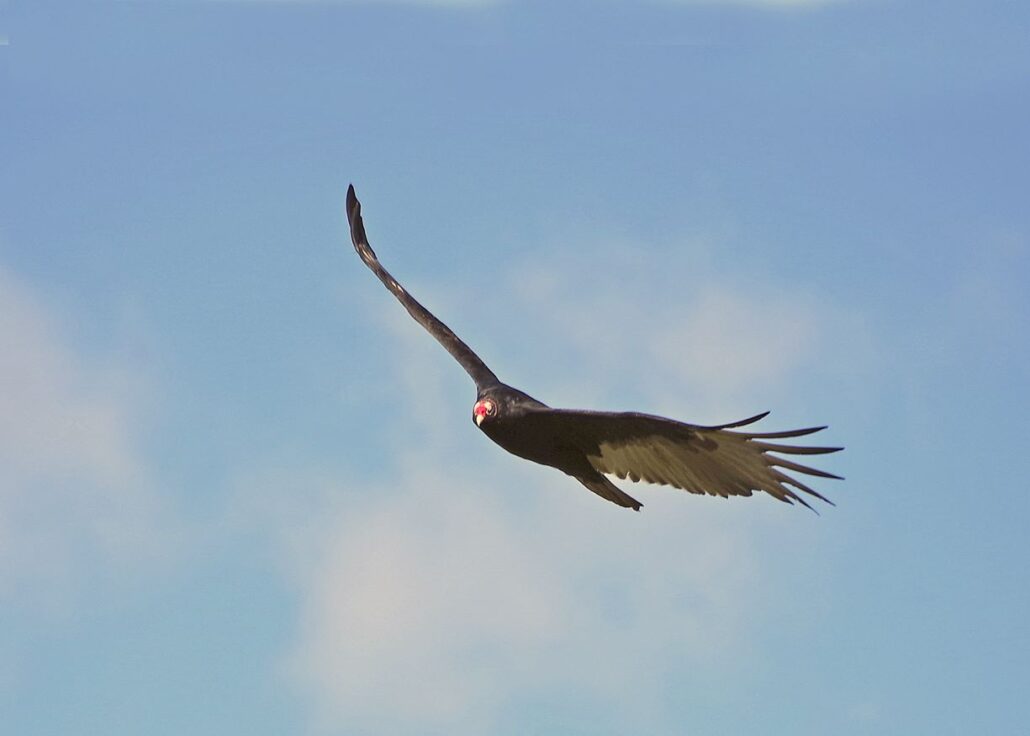
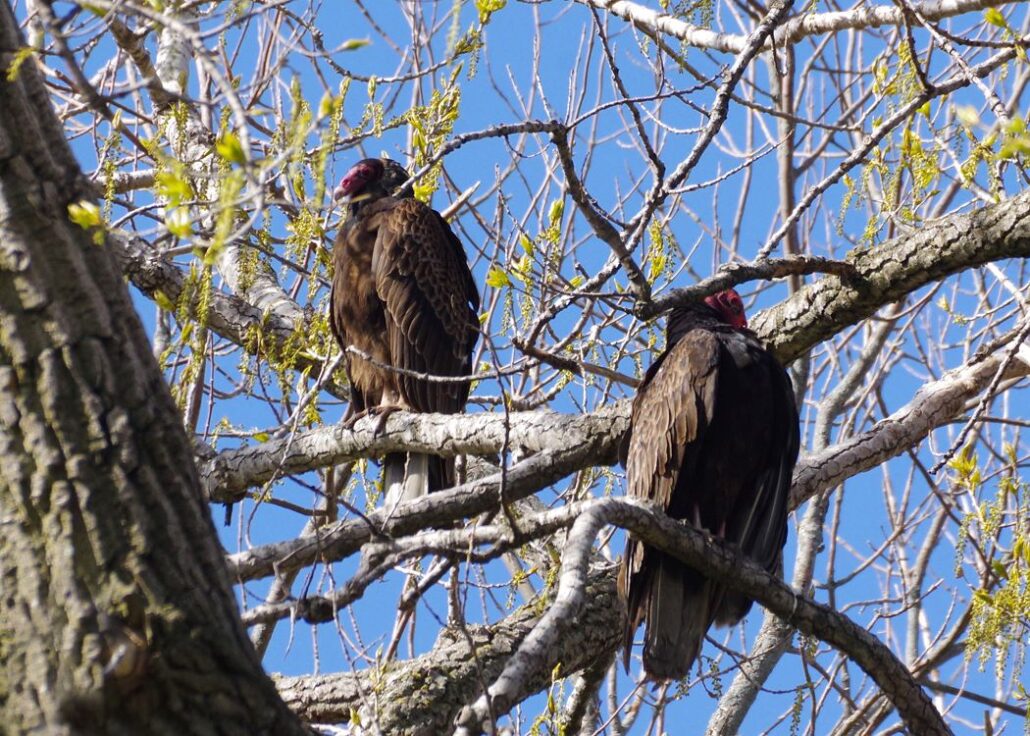
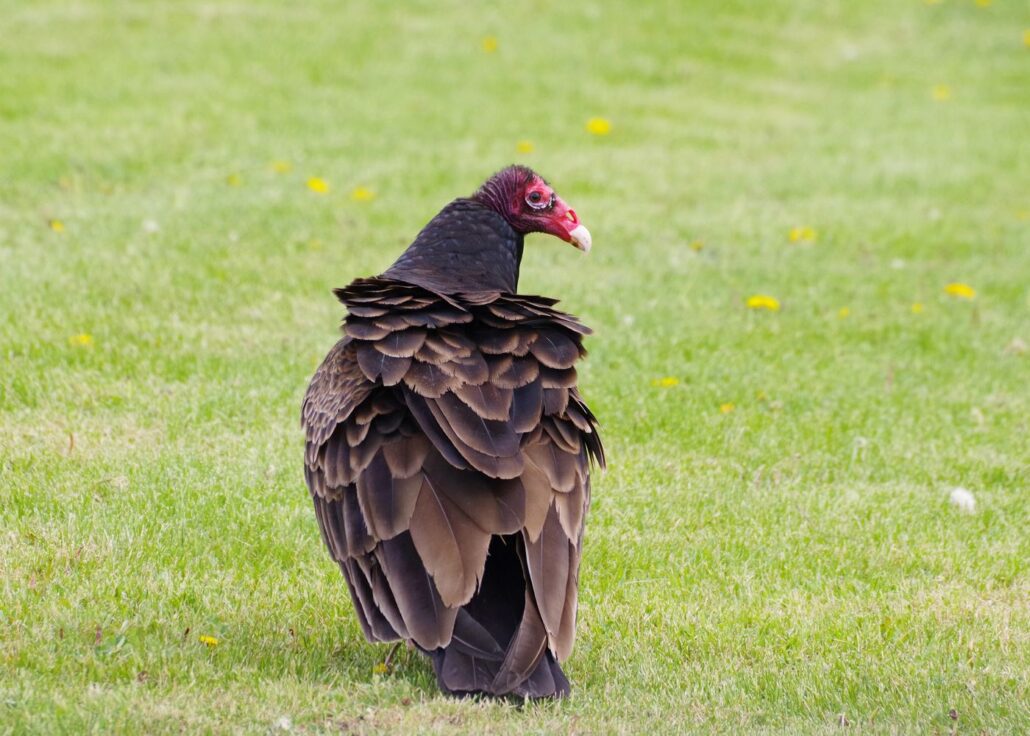
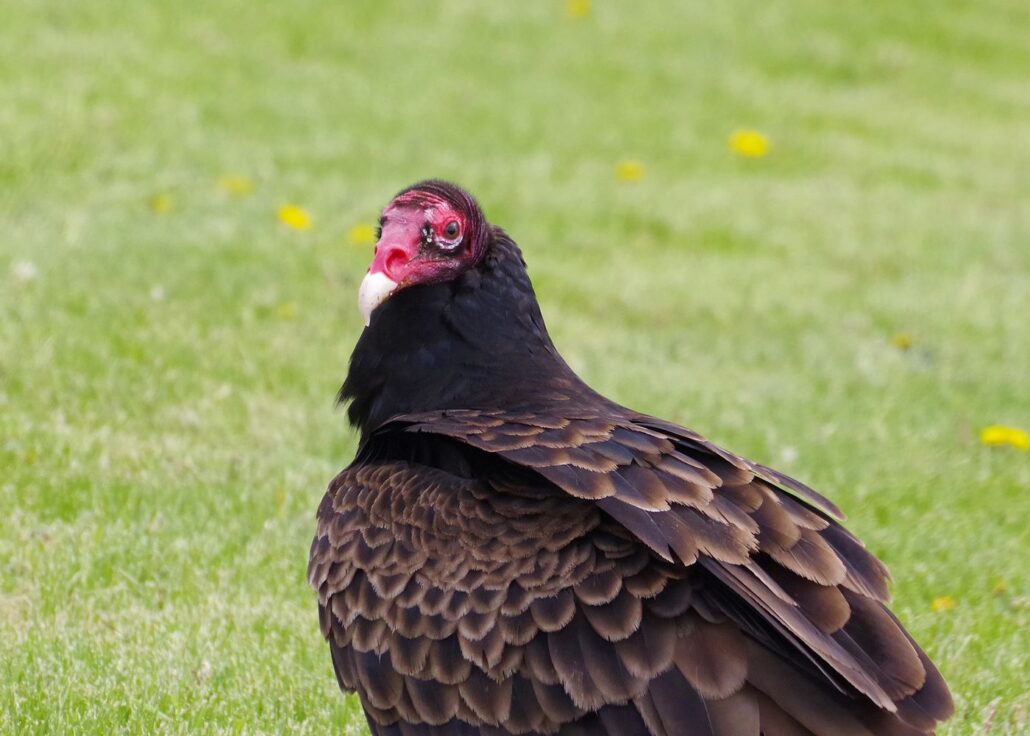
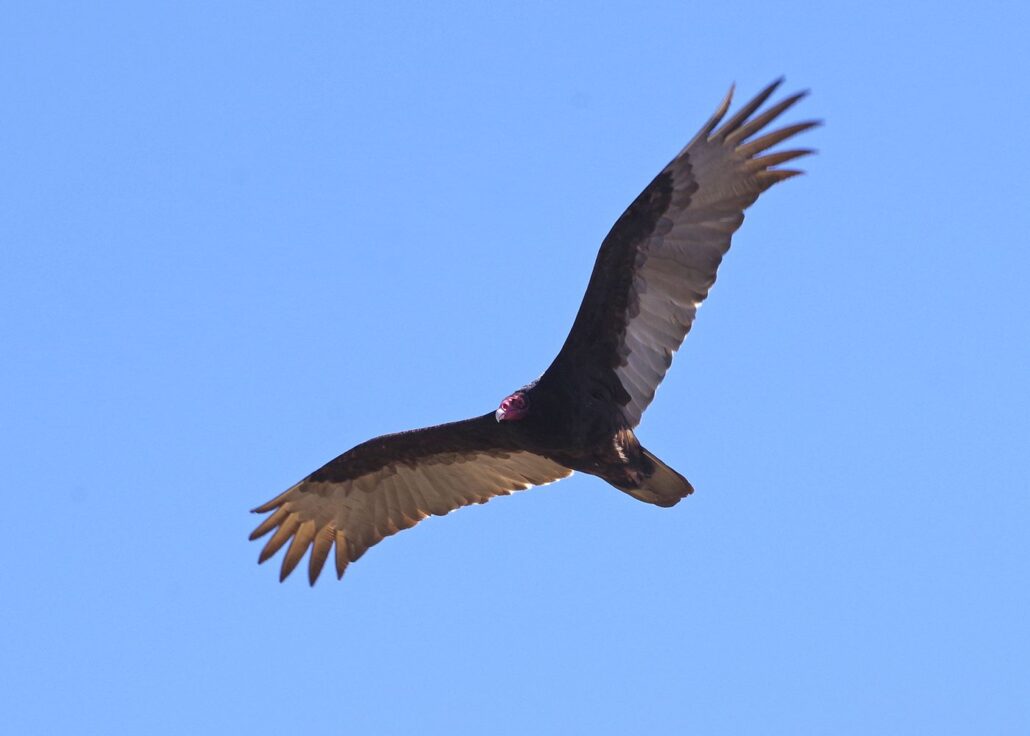
These are big birds, with bodies about 30” long and wingspans of six feet. They are about three-quarters the size of a Bald Eagle, but at a maximum of four pounds, they are less than half an eagle’s weight, and they lack the strong, gripping talons of eagles and hawks. Most of their feathers are dark brownish gray, and in flight, the leading edge of their wing is dark and the trailing edge is silvery. Males and females look the same, and young TVs have gray heads. They do lots of soaring and not much flapping, their wings held in a wide “V” called a dihedral for stability, and they often tip back and forth.
Turkey Vultures don’t have a voice box (syrinx), so their vocalizations are mainly grunts https://www.audubon.org/field-guide/bird/turkey-vulture and hisses https://www.allaboutbirds.org/guide/Turkey_Vulture/sounds that are used to startle intruders.
Although they bathe frequently, people who get close to them will testify that vultures stink — partly because of their diet, and partly because when they’re hot, they excrete urine on their legs, which cools them as it evaporates and also disinfects their legs (it’s called “urohydrosis“).
TVs are scavengers (“recyclers”) that mostly feed on dead mammals, though they will eat other dead vertebrates, and they are thought to eat more than 100 pounds of meat a year. They also feed on vegetation. They use their keen eyesight to locate carcasses, but vultures are also one of the few birds that have a good sense of smell, and they count on both senses as they fly low over roads and fields (and dumps and dumpsters) — they can sift out the odor of decay from a mile away. Like owls, they spit up pellets of indigestible bones and fur. TVs rarely take live prey, but Black Vultures do kill some newborn livestock and the occasional small pet.
The amazing thing about Turkey Vultures’ food habits is that no matter how old the carcass or how riddled it is with bacteria, botulism, cholera, or other such organisms, their immune systems protect them from getting sick. Even more amazing is the fact that pathogens that are neutralized by the vultures’ highly acidic digestive juices (the pH is less than 1) are not present in their droppings! And, according to an article on the National Audubon Society website, “immensely powerful acids in the vultures’ gut begin digesting the flesh so thoroughly that they even destroy the prey’s DNA.” In addition, while they destroy some microbes, the birds apparently filter out some of the ingested bacteria and put it to work in their guts. The end result is that vultures reduce the amount of highly toxic pathogens in the environment, so, the cultural idea of being cleansed by being eaten by a Turkey Vulture has some biological truth.
During courtship, a group of TVs gather on the ground and hop around in a circle in a stylized dance with their wings spread (something this writer would dearly like to see!). They also perform “follow flights” in which one bird leads the other through elaborate aerial maneuvers. Pairs stay together for a long time, both on their breeding and their wintering grounds.
Turkey Vultures lay one to three eggs in a slight depression that they scrape into the ground under bushes, in caves, hollow logs, and old buildings. They will use abandoned hawk nests, and they’ll reuse successful nest sites. Incubation lasts about five weeks, and after they hatch, the chicks are fed regurgitated food by both parents. They can fly at nine or ten weeks and are soon independent.
While their populations seem to be stable, Turkey Vultures are susceptible to collisions with power lines and other structures, with fences, and with cars as they gather at road kills. Poisoned baits, lead shot ingested from dead animals, and deliberate shootings are also mortality factors. They are protected by the Migratory Bird Treaty Act.
Fun Facts about Turkey Vultures:
- Through the years, the New World vultures have been classified with the falcons, with the storks and herons, and in their own order, but the latest DNA-sequencing seems to put them, for now, with the non-falcon birds of prey.
- When predators approach, TVs, young and old alike, defend themselves by projectile vomiting, sending a stream of caustic, semi-digested rotten meat as far as 10 feet away.
- They may perch with wings outspread to warm up in the morning, to cool off during a hot day, or to dry wet feathers.
- TVs like company –- they roost, soar, and migrate with other TVs.
- They are smart and curious, and in captivity will play games with their caretakers (in Wisconsin, you must be licensed to take a wild animal from the wild).
The BugLady is looking forward to their return in spring.
Kate Redmond, The BugLady
Bug of the Week archives:
http://uwm.edu/field-station/category/bug-of-the-week/

